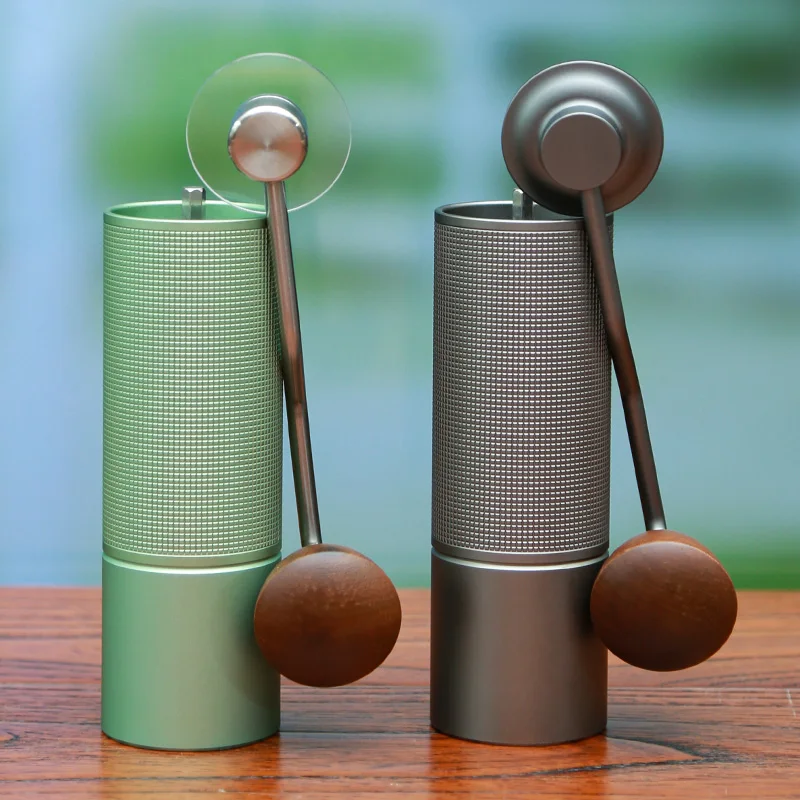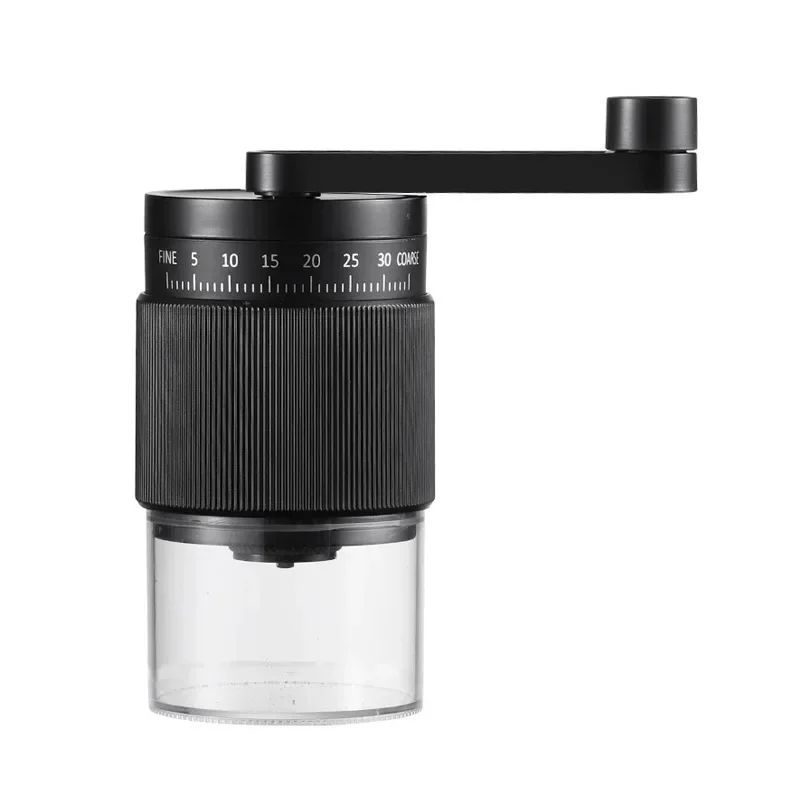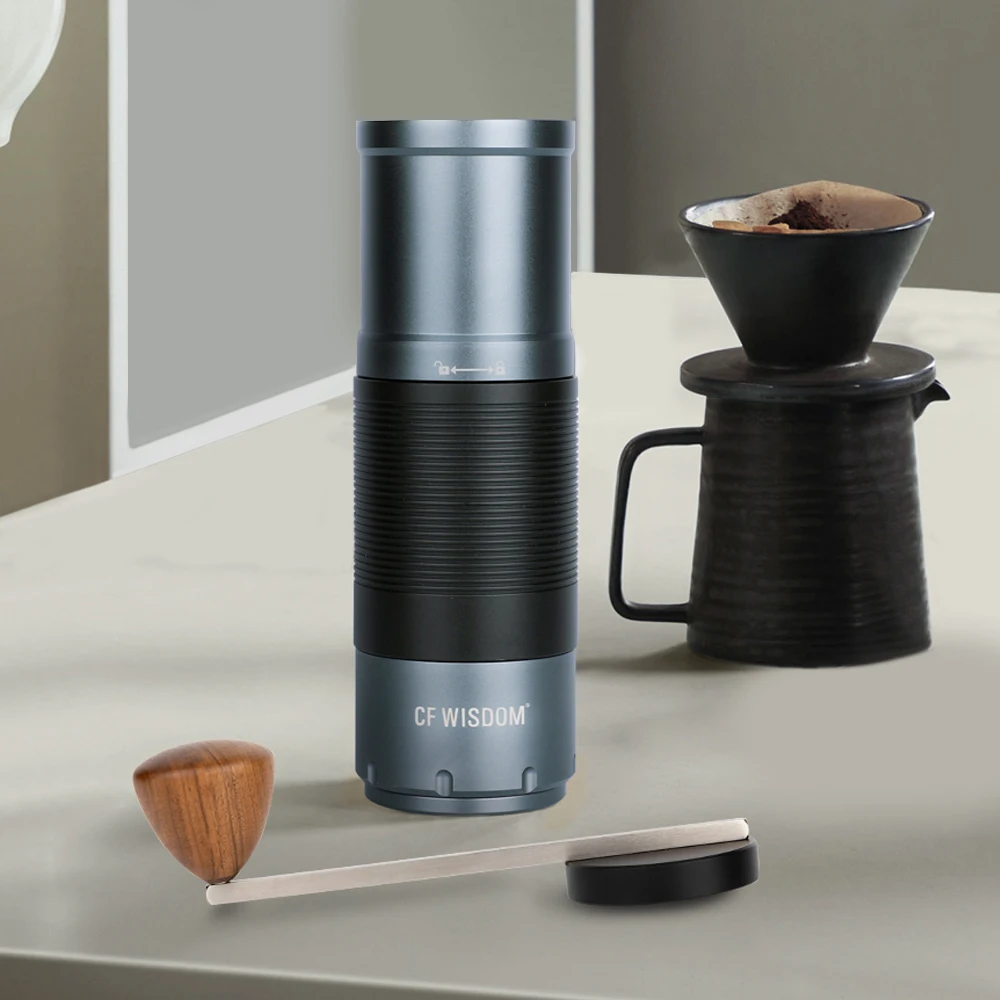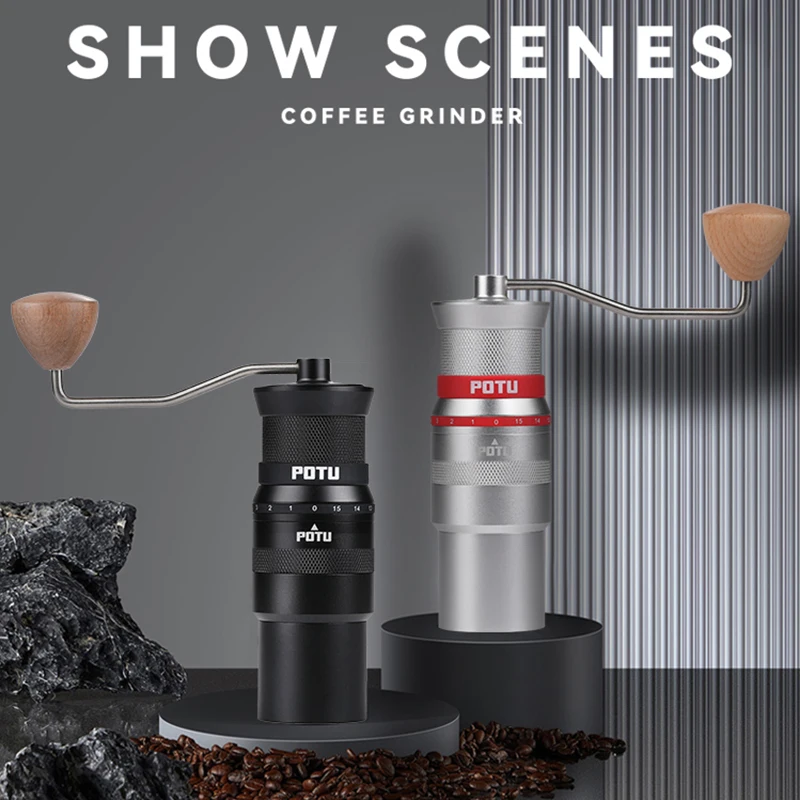Understanding the Critical Role of Grind Texture in Espresso Making
The perfect espresso shot is a delicate balance of art and science, and at its foundation lies one critical element: grind texture. This seemingly small detail makes or breaks your espresso experience, influencing everything from extraction time to flavor development.
When brewing espresso, water is forced through compacted coffee grounds under high pressure. This unique brewing method means the grind texture directly controls:
- How much resistance the water encounters
- How evenly extraction occurs throughout the puck
- How quickly flavor compounds are dissolved
- How balanced your final shot tastes
Even with modern equipment and precise measurements, the tactile assessment of your coffee grounds remains an invaluable skill. Professional baristas worldwide still rely on feeling their grounds between their fingers as a diagnostic tool, knowing that the ideal extraction time of 25-30 seconds depends heavily on getting this texture just right.
Understanding espresso precision grind settings is fundamental to achieving consistency in your brewing routine. The science behind this involves surface area—finer grinds expose more coffee to water, increasing extraction efficiency but also resistance. Too fine, and water can’t pass through; too coarse, and it rushes through without extracting enough flavor.
In this guide, you’ll learn how to assess grind texture by feel, recognize common problems, make precise adjustments, and develop the sensory skills that separate good espresso from exceptional espresso.
The Ideal Espresso Grind Texture: What You Should Feel
The perfect espresso grind has a distinctive tactile quality that, once learned, becomes an invaluable reference point for your brewing journey. When you achieve the optimal texture, it should feel:
- Similar to fine table salt but slightly finer
- Like powdered sugar with a subtle gritty quality
- Velvety between your fingers, not harsh or scratchy
- Neither powdery like flour nor granular like sand
- Consistent throughout without noticeable larger particles
When you rub a small amount between your fingers, the texture should be distinctly fine but retain a slight grittiness. This balance reflects the perfect middle ground between surface area (for flavor extraction) and water permeability (for proper flow).
Finding the correct grind setting for espresso often requires experimentation, but understanding the target texture gives you a valuable sensory benchmark. The ideal grind strikes a precise balance—the particles are small enough to provide necessary resistance for pressure build-up but not so fine that they block water flow entirely.
One important visual cue: properly ground espresso coffee should have a uniform appearance without visible variation in particle size. This consistency is something that quality fine adjustment hand grinders excel at producing, as they allow for precise control over grind fineness.
Remember that this texture represents a starting point—different coffee origins, roast levels, and equipment may require subtle adjustments to this baseline.
The Definitive Pinch Test: Assessing Your Grind by Feel
The pinch test is a reliable technique for evaluating your espresso grind texture without specialized equipment. Here’s how to perform this hands-on assessment:
- Wash and dry your hands thoroughly
- Take a small amount of ground coffee (about 1/4 teaspoon)
- Place it on your palm
- Gently pinch the grounds between your thumb and forefinger
- Slowly release pressure and observe how the grounds behave
Your observations during this test provide immediate feedback about your grind quality:
| Grind Assessment | How It Feels | What It Means |
|---|---|---|
| Too Fine | Forms a dense “pancake” that sticks firmly to fingers; leaves clear fingerprints | Will likely cause over-extraction and potentially choke machine |
| Optimal | Clumps gently and holds shape briefly before falling apart; slight sticking to fingers | Proper resistance for ideal extraction |
| Too Coarse | Feels distinctly gritty; falls apart immediately; hardly sticks to fingers at all | Will lead to under-extraction and fast, watery shots |
The definitive guide to espresso grind texture emphasizes that optimal grounds should clump slightly when pressed but break apart easily. If your grounds form a solid mass that doesn’t break apart at all, they’re likely too fine. Conversely, if they feel distinctly gritty and won’t clump whatsoever, they’re too coarse for proper espresso extraction.
Common mistakes when performing this test include having damp hands (which makes grounds stick regardless of grind size) and applying too much pressure (which can make even coarse grounds appear to clump).
Variables like humidity, bean freshness, and oil content can affect clumping behavior, so consider these factors when interpreting results. As you gain experience, this simple test will become an intuitive part of your espresso workflow.
How Grind Texture Affects Your Espresso Shot
The texture of your coffee grounds directly influences how your espresso extracts, creating a clear cause-and-effect relationship between what you feel and what you taste. Understanding this connection helps you troubleshoot and perfect your espresso.
When the grind texture is optimal, water flows through the coffee puck at just the right rate—not too fast, not too slow. This creates the ideal extraction time (typically 25-30 seconds) where water has sufficient contact with the coffee particles to extract flavor compounds in balanced proportions.
| Grind Feel | Shot Behavior | Taste Profile | Crema Appearance |
|---|---|---|---|
| Too fine | Slow drip or no flow; extraction time >35 seconds | Bitter, harsh, burnt, astringent | Dark, thin or mottled; may disappear quickly |
| Optimal | Steady flow like warm honey; 25-30 second extraction | Balanced sweetness, pleasant acidity, full body | Rich golden-brown, thick, persistent |
| Too coarse | Rapid flow; extraction time <20 seconds | Sour, sharp, thin, watery, underdeveloped | Pale, thin, disappears quickly |
The science behind this is straightforward: finer grounds create more surface area and greater resistance to water flow. Too much resistance means over-extraction of bitter compounds; too little results in under-extraction where desirable flavors haven’t fully dissolved.

Understanding the 30-second espresso rule gives you a practical target for extraction time based on proper grind texture. When your grounds feel right between your fingers, and your shot extracts within this window, you’re on the right track to flavor perfection.
Visual cues in your shot also reflect grind quality—channeling (where water finds paths of least resistance through the puck) appears as blonde streaks in the extraction and indicates inconsistent grind texture. A properly textured grind creates even resistance throughout the coffee puck, resulting in uniform extraction.
Fine-Tuning Your Grinder: From Feel to Perfect Shots
Once you understand how espresso grind should feel and how it affects extraction, it’s time to methodically adjust your grinder to achieve consistent results. Follow this systematic approach:
- Start with a baseline setting that produces grounds similar to fine table salt
- Perform the pinch test to assess initial texture
- Pull a shot and time the extraction (target: 25-30 seconds)
- Taste and evaluate the shot
- Make a small adjustment (typically ¼ turn or one “click”) based on results
- Purge the grinder by running a small amount of beans through to clear previous grounds
- Repeat steps 2-6 until desired results are achieved
When making adjustments, remember these crucial tips:
- Only change one variable at a time (keep dose weight, tamping pressure, and other factors constant)
- Document successful settings for different coffee beans
- Make smaller adjustments than you think necessary—tiny changes in grind size significantly impact extraction
- Allow 2-3 shots after adjustment to properly evaluate changes
- Remember that different beans may require different settings
Precision manual grinders offer excellent control for these fine adjustments, allowing you to dial in the perfect texture incrementally. Their ability to make micro-adjustments is particularly valuable when you’re close to the ideal texture but need just a slight refinement.
After finding your sweet spot, maintaining consistency requires attention to detail—keeping beans fresh, using consistent tamping pressure, and periodically cleaning your grinder to prevent buildup that can affect grind quality.
Advanced Considerations: What Affects Grind Texture and Feel
Beyond the basic principles of grind size, several factors influence how your espresso grounds feel and perform:
Bean Characteristics and Roast Level
Different coffee beans grind differently based on their density, hardness, and brittleness. These properties vary by:
- Origin (elevation, variety, processing method)
- Roast degree (light, medium, dark)
- Age since roasting
Dark roasts are more brittle and fracture more easily during grinding, often resulting in a wider particle size distribution. This means dark roasts typically need a slightly coarser grind setting than light roasts to achieve similar extraction times.
Understanding espresso grind size for light versus dark roasts helps you make appropriate adjustments when switching between different coffee types.
Environmental Factors
Your grinding environment plays a surprising role in grind texture:
- Humidity can cause grounds to clump more readily, making them feel finer than they actually are
- Static electricity (more common in dry environments) affects how grounds distribute and clump
- Temperature can affect burr expansion in grinders, subtly changing grind size
Grinder Variables
Not all grinders create equal grounds, even at identical settings:
- Burr type (flat vs. conical) produces different particle shapes
- Burr material (ceramic vs. steel) affects heat transfer and edge retention
- Burr sharpness impacts particle size consistency
- Speed and heat generation can alter bean oils and perceived texture
These variables explain why experienced baristas often prefer to assess grind by feel rather than relying solely on grinder settings—it accounts for all these factors simultaneously.
Common Troubleshooting: When Grind Feel and Shot Quality Don’t Match
Sometimes you’ll encounter situations where your grounds feel right but your shots still don’t extract properly. Here are common problems and solutions:
Problem: Grounds feel correct but shot runs too fast
– Possible causes: Channeling, insufficient tamping pressure, uneven distribution, worn burrs
– Solution: Ensure even distribution before tamping, check for even extraction, inspect burr condition
Problem: Grounds feel correct but shot runs too slow
– Possible causes: Excessive dose, too much tamping pressure, grinder producing too many fines
– Solution: Verify dose weight is appropriate, use consistent moderate tamping pressure
Problem: Inconsistent shots despite consistent feel
– Possible causes: Temperature fluctuations in machine, grinder inconsistency, bean freshness variation
– Solution: Allow machine to fully heat, ensure grinder is clean and calibrated

Quality manual coffee grinders for espresso can help eliminate many of these issues by providing consistent grinding performance without generating excessive heat that can affect bean oils and extraction.
When troubleshooting, also check for:
- Static buildup causing grounds to stick to grinder parts
- Retention of old grounds in the grinder that mix with fresh grounds
- Burr alignment issues causing inconsistent particle size
- Bean freshness (beans that are too fresh or too old can behave unpredictably)
Proper grinder maintenance—regular cleaning, burr inspection, and calibration—is essential for maintaining consistent grind texture.
Is Your Espresso Grind Right? Visual Indicators to Confirm Texture
While touch is primary for assessing espresso grind, visual cues provide valuable confirmation. Here’s what to look for visually when evaluating your grind:
In the Grinder/Container:
– Even, consistent appearance without obvious large particles
– Slight clumping (but not excessive “snowballing”)
– No visible powder separated from larger particles
In the Portafilter:
– Grounds should distribute evenly when dosed
– After light tapping, surface should remain relatively level
– When tamped, the puck should be smooth without cracks or unevenness
During Extraction:
– Flow should begin as slow drops, gradually thickening to a honey-like stream
– Color should transition from dark to caramel in a consistent pattern
– No spurting, channeling, or uneven flow from different parts of the basket
After Brewing:
– Spent puck should be intact when removed (not soggy or broken)
– Surface should show even contact with the shower screen
– No obvious channels or holes visible in the used puck
Troubleshooting espresso grind issues becomes easier when you combine these visual indicators with tactile assessment. The two methods complement each other—what you feel should match what you see.
Pay particular attention to the distribution of grounds in the portafilter. Even the perfect grind texture will perform poorly if unevenly distributed, resulting in channeling where water finds the path of least resistance rather than flowing evenly through the puck.
Different Grinders, Different Feels: Equipment Considerations
Not all coffee grinders are created equal, and your choice of grinding equipment significantly impacts the texture you’ll achieve:
| Grinder Type | Texture Characteristics | Suitability for Espresso |
|---|---|---|
| Blade Grinders | Inconsistent, mixed particle sizes | Poor – Not recommended |
| Entry-Level Burr Grinders | Somewhat consistent, limited adjustment | Acceptable with pressurized portafilters only |
| Quality Manual Burr Grinders | Very consistent, wide adjustment range | Excellent with proper technique |
| Commercial/Prosumer Electric Grinders | Extremely consistent, precise adjustment | Excellent, industry standard |
High-quality manual coffee burr grinders offer several advantages for espresso preparation:
- No heat generation that can affect bean oils
- Precise adjustment mechanisms for finding the perfect texture
- Consistent particle size distribution for even extraction
- Durable burrs that maintain performance over time

When choosing between burr types:
– Flat burrs tend to produce very uniform particle sizes with a slightly more “even” feel
– Conical burrs often create a bimodal distribution with some fines that contribute to body
The difference in feel between grinders explains why changing equipment often requires recalibrating your sense of “ideal” texture. What feels right on one grinder may need adjustment on another, even if both ultimately produce excellent espresso.
Fine Adjustment Hand Grinder, Precision Manual Grinder, Travel Coffee Grinder
Price range: $185.11 through $494.63 Select options This product has multiple variants. The options may be chosen on the product pageHand Burr Grinder, Hand Crank Coffee Grinder, Manual Espresso Grinder, Portable Coffee Grinder
Price range: $262.72 through $300.22 Select options This product has multiple variants. The options may be chosen on the product pageManual Burr Mill, Manual Coffee Grinder Stainless Steel, Manual Coffee Mill Grinder, Mechanical Coffee Grinder
Price range: $127.26 through $130.32 Select options This product has multiple variants. The options may be chosen on the product pageHand Burr Grinder, Manual Coffee Grinder Stainless Steel, Precision Manual Grinder
Price range: $183.64 through $187.52 Select options This product has multiple variants. The options may be chosen on the product page
Developing Barista Instincts: Mastering Grind Feel Over Time
Becoming proficient at assessing espresso grind texture by feel doesn’t happen overnight. Like any sensory skill, it develops through consistent practice and mindful attention.
New home baristas should expect a learning curve as they develop their “finger calibration.” What might initially seem like subtle differences will eventually become obvious distinctions as your sensory memory develops.
Here are practical ways to accelerate your learning:
- Create a reference sample of your best grind and store it in an airtight container
- Compare different grinds side by side to better understand the spectrum
- Keep notes connecting grind feel to extraction results
- Practice the pinch test daily, even when you’re not brewing
- Challenge yourself to predict extraction time based on feel alone
Using quality equipment like flat burr hand grinders provides consistent results that make this learning process more effective—you’re training your senses against a reliable baseline rather than variable output.
Remember that professional baristas have evaluated thousands of grind samples throughout their careers. Be patient with yourself as you build this tactile memory, and trust that your assessment will become more intuitive with each espresso you brew.
The satisfaction of confidently assessing grind texture and predicting how it will extract is one of the most rewarding aspects of espresso craftsmanship—a skill that enhances your entire coffee experience.
Can You Adjust Without Changing Grind? Alternative Methods to Modify Extraction
While grind texture remains the primary variable for controlling espresso extraction, other factors can be adjusted when grind changes aren’t possible or practical:
Dose Adjustments:
– Increasing dose (by 0.5-1g) creates more resistance, slowing extraction similar to a finer grind
– Decreasing dose reduces resistance, speeding up flow similar to a coarser grind
– This approach works best for minor corrections, not major texture problems
Distribution Techniques:
– WDT (Weiss Distribution Technique) using a thin needle to break up clumps
– Careful side-tapping to even the grounds in the portafilter
– These methods can improve extraction uniformity without changing grind
Tamping Variables:
– Applying slightly more pressure can partially compensate for a too-coarse grind
– Using a slightly lighter tamp may help if grounds are marginally too fine
– Ensuring perfectly level tamping prevents channeling that exacerbates grind issues
Temperature Adjustments:
– Higher brewing temperature can extract more from slightly coarser grinds
– Lower temperature can reduce over-extraction when grind is slightly too fine
While these adjustments can be helpful in a pinch, they’re best viewed as fine-tuning tools rather than substitutes for proper grinding. The texture of your grounds remains the fundamental variable in espresso preparation.
Does Grind Texture Differ for Pressurized vs. Non-Pressurized Portafilters?
Yes, the ideal grind texture differs significantly between pressurized and non-pressurized portafilters, and understanding this difference is crucial for proper extraction:
Pressurized portafilters (also called dual-wall baskets) have an additional mechanism—typically a small hole or valve—that restricts flow and artificially creates pressure regardless of grind size. These are designed to:
- Compensate for less-than-ideal grind texture
- Create crema even with suboptimal grounds
- Make espresso more forgiving for beginners
For pressurized portafilters, the ideal grind is typically noticeably coarser than traditional espresso grind—closer to a fine drip coffee consistency. Using true espresso-fine grounds in a pressurized system often results in over-extraction and bitter coffee.
Non-pressurized portafilters (standard single-wall baskets) rely entirely on the coffee grounds themselves to create proper resistance. This design:
- Requires precisely textured grounds to create appropriate resistance
- Provides more control over extraction variables
- Produces more nuanced flavors when used correctly
When transitioning from pressurized to non-pressurized systems, expect to make your grind significantly finer and pay much more attention to consistency and texture. This transition often represents a significant step in the home barista journey, requiring greater attention to grind quality.
Should Espresso Grind Feel Different for Light vs. Dark Roasts?
Yes, the optimal espresso grind texture does typically vary between light and dark roasted coffees, though the differences are subtle:
| Roast Level | Ideal Grind Characteristic | Why This Works |
|---|---|---|
| Light Roasts | Slightly finer, less clumping | Harder beans, less brittle, need more surface area for extraction |
| Medium Roasts | Standard espresso fineness | Balanced bean structure requires typical espresso grind |
| Dark Roasts | Slightly coarser, more tendency to clump | More brittle, more oils, extract more readily |
Light roasts are denser and less porous than dark roasts, making them more resistant to water extraction. This density means they typically benefit from a finer grind to increase surface area and facilitate proper extraction. When feeling light roast espresso grounds, you might notice they seem slightly finer yet less prone to clumping due to their lower oil content.
Dark roasts, conversely, are more brittle and contain more exposed oils. They extract more readily and thus generally require a slightly coarser grind to prevent over-extraction. These grounds often feel more prone to clumping between your fingers due to their higher oil content.
Understanding these differences becomes particularly important when switching between roast styles. The espresso grind size for light versus dark roasts may require adjustments of several “clicks” or partial turns on your grinder to maintain ideal extraction times.
When assessing grind by feel, remember to consider the roast level as context for your evaluation—what feels correct for a dark roast might be slightly different than the ideal texture for a light roast of the same bean.







